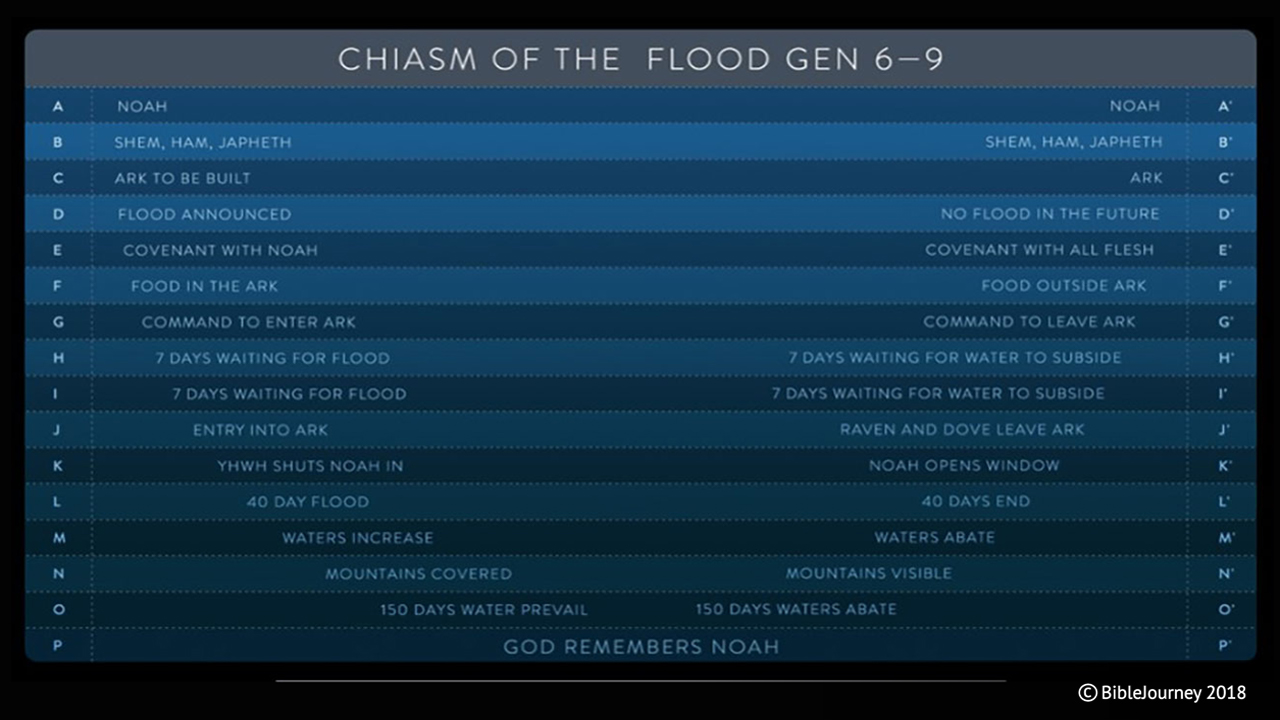Journey Through Genesis 1-11ਨਮੂਨਾ

Intro
Nicole introduces this course on Genesis 1-11, a challenge to worldviews that are mythical and cyclical, and which presents a cohesive linear story that moves us all from a cosmic beginning toward God’s intended climax.
Intro
Nicole introduces this lesson on the creation story and its parallels from other cultures.
Creation of the World: In the Text
As we get started reading the Bible carefully together, we’ll introduce you to the role of “Interpretation Stops” in the curriculum. We don’t want to miss the importance of repetition and structure in the first chapter of Genesis.
Interpretation Stop: Repetition
Repetition is the most straightforward way to create emphasis. The easiest kind of repetition to notice is words (which you can track with a concordance). In Romans chapter 7, the word “law” occurs 23 times. That’s followed by the word “Spirit” occurring 21 times in chapter 8.
While some words are obviously rich theologically, some simple words are important threads that help reinforce the meaning of a passage or book. The preposition “in” functions this way in John 17:20-23 where repetition of phrases reinforces the idea of oneness with God: in me, in you, in us, in them.
Also, on occasion we will point out how an original Hebrew, Aramaic or Greek root is used in different forms to make the emphasis. These forms are often translated with different words in English.
Interpretation Stop: Literary Structures
Like all literature, the Bible is much more than words. In narratives, for example, characters and settings are introduced in the process of a story’s plot. Individual stories build into larger stories which are integrated into cycles of stories and the larger biblical metanarrative.
Genesis, for example, is structured around the generations of key figures. Here are just a few examples: Adam (Gen 5:1), Noah (Gen 6:9), Jacob (Gen 37:2). Within those generational main plots come subplots, like that of Lot in the larger Abraham story.
Similar kinds of structuring elements are evident also in law, poetry, parables and prophecy. Thus, as you read each kind of genre in the Bible, pay attention to the way a passage is organized.
Does a proverb create a contrast between the two lines? (“Trust in the LORD with all your heart / and lean not on your own understanding” Prov 3:5, NIV.)
Or, does a proverb restate the first line with an elaboration? (“Start children off on the way they should go, and even when they are old they will not turn from it” Prov 22:6, NIV.)
Does a poem or story have an inclusio—that is, bookends that frame the beginning and end with a similar phrase? For example, the story of Jesus in his youth in Luke 2:40-52 is bookended by verse 40 (“And the child grew and became strong, filled with wisdom”) and verse 52 (“And Jesus increased in wisdom and in stature and in favor with God and man”).
Also beware that some inclusios are part of a fuller chiasm—with inverse repetition of lines or thoughts throughout (diagrammed as A, B, C, D, C’, B’, A’). Let’s look at Genesis 6–9 as an example:

The Structure of the Six Days of Creation
About this Plan

Have you ever wished for a Bible study that could take you beyond surface-level reading? If so, get ready for our journey through Genesis 1-11! You'll get to immerse yourself in Scripture (by looking at key terms and ideas), explore what's behind it (by learning historical-cultural background), and also discover its impact by considering its implications, not only for you, but for the global church. Let's dive in!
More
Related Plans

Music: Revelation in Song

Seeing With Your Ears

A Teen's Guide To: Unshakeable Faith

I Said Yes to Jesus: A 5-Day Journey to Take Your Next Steps in Faith by Youth Alive Australia

Boundaries: A Biblical Perspective

The Furnace of Leadership

THE RIPPLE EFFECT: The Art of Discipleship

Spiritual Training Disciplines

Experience of Love
